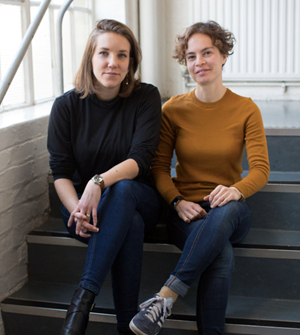
"We think that the way exhibitions are currently put together is opaque and undemocratic, and the wrong stories are being told at our cultural institutions because of a lack of diversity of networks. Vastari is using technology to break down the barriers and enable collaborations, especially internationally, to make sure that exhibitions are driven by “what’s what” rather than “who’s who”.
Image: Vastari, copyright Vastari
Born from the desire to help the creative industry to be more efficient with their resources, Vastari is changing the way this sector connects and collaborates. They believe that to share culture and knowledge is to keep it alive and that everyone should be able to participate in this dialogue.
ArtDependence, Etienne Verbist (AD): Hi Bernadine. Please can you explain to us who you are?
Bernadine Bröcker Wieder (BBW): I’m the Co-Founder and CEO of Vastari Group, a technology company connecting exhibition producers, venues, collectors and suppliers - basically the entire supply chain - to make sure exhibitions are planned more efficiently worldwide.
We think that the way exhibitions are currently put together is opaque and undemocratic, and the wrong stories are being told at our cultural institutions because of a lack of diversity of networks. Vastari is using technology to break down the barriers and enable collaborations, especially internationally, to make sure that exhibitions are driven by “what’s what” rather than “who’s who”.
The company is named after Giorgio Vasari, whose stories in the 16th century helped bring the Renaissance artists to life in such a way that they are remembered and valued for centuries. Nowadays, the way to engage the public, rather than writing in the vernacular like Vasari did, is by building experiences so that people understand and appreciate art & culture.
So, we’re Vastari - Vasari with a “t” for technology.
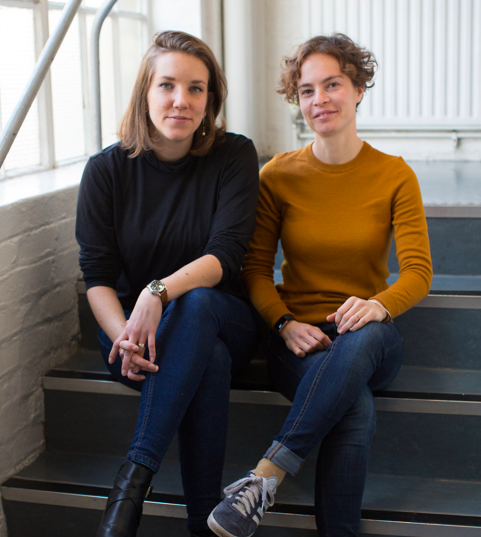
Vastari, copyright Vastari
AD: Why do you do what you do?
BBW: I love working with exhibitions. Exhibitions are a value-driver for the art industry but the entire process isn’t digitized. It is impossible to map what the business models are for existing exhibition production, and what supply and demand there is for specific subjects.
Secondly, the art market is rigged - exhibition history drives up the value of collections, yet the whole process is handled offline, based on a network of cronies. For example, 30% of the solo exhibitions that happened in the United States in 2015 were artists from only 5 galleries. Magnus Resch also just published a bit or research that came to the same conclusions. It can’t be that commercial practices are the sole drivers that define value - important artists should be exhibited no matter where they come from what collection they’re in or who they know.
Lastly, the supply chain for high-value goods like exhibitions and luxury assets is fascinating. There are so many touch points that need optimisation, from logistics to risk assessment to marketing. We are building the network to be able to help with tech products along the whole journey.
AD: What is your specific proposition to art world collectors?
BBW: With Vastari, collectors have the opportunity promote their collection to the world's largest community of curators and museums.
The cost implications are excuse enough. Artworks reputedly increase in value by 20% on average when included in a museum exhibition. Plus, when your artworks are on display in exhibitions, you save on storage and restoration costs.
Our database of over 8,800+ museums increases on a daily basis. We have new requests for content from these venues every single week.
Vastari is a platform through which collectors can have their objects and artworks selected for exhibitions around the world. In practice, collectors can upload their collection and choose if they want it to be listed to curators or kept private, and they can respond directly to requests - in essence 'calls for entries' - posted by museum curators searching for works to include in their shows.
We also offer a premium service for collectors which includes professional photography and cataloguing of their collections by experts from the relevant fields, bespoke introductions to museum contacts and assistance hiring a collection curator.
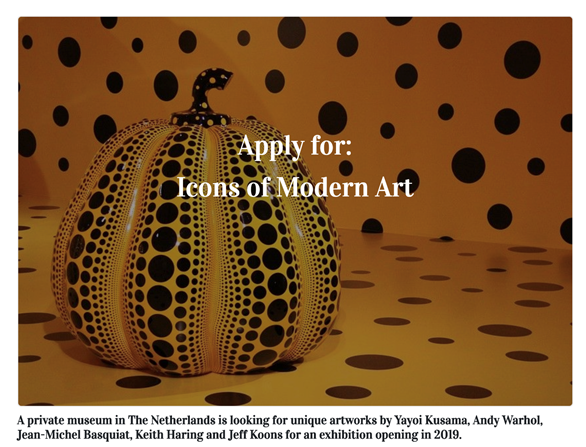
Our ambition is to make life easy for collectors to expand their personal networks and benefit directly from having their work exhibited. And audiences benefit from seeing works that they might not otherwise have seen in locations they might not have expected.
For example, we had a super private collection join Vastari 2 years ago. Most of their objects were in storage, but they are very important works by Old Masters. Using Vastari, this collector has already secured more than 8 collaborations with museums in the USA, Denmark, Russia, France, the UK and Switzerland. These curators would have otherwise never connected with this collector, and they have renewed year-on-year due to this success.
AD: What’s your goal?
BBW: To be like Vasari - to make sure that the right stories are made available so that people keep loving art for the centuries to come.
On a more practical level, we would like to become the world’s leading marketplace for exhibitions, handling everything from the market assessment for a specific type of art to the loan agreements in a digital format using distributed ledgers.
Lastly, we’d like to become an alternative register of verified (albeit non-selling) transactions for the art & culture world.
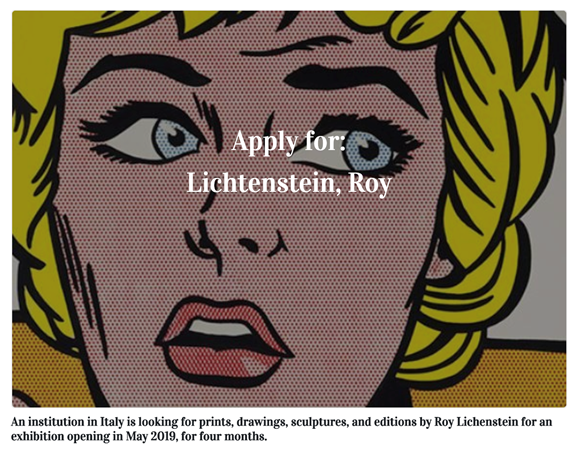
AD: How is Vastari disrupting?
BBW: We are already changing the global networks for exhibitions and temporary loans of works of art. Over the first 9 months of 2018, Vastari facilitated the loan and hire of over $1.1bn worth of art and collectibles for exhibitions.
But in the long run, what we are disrupting is the value chain for objects included in exhibitions.
When you’re curating a show about Picasso, you should include the work that helps narrate the thesis of the exhibition best, rather than the one that’s most convenient for you to borrow. When a museum has a gap in their programming, they should be able to access exhibitions from multiple providers and choose the best one for them - rather than what one person recommends or what’s convenient in their network.
We are basically disrupting an industry that relied on little black books.
We have thousands of museum professionals and curators using our platform, meaning that we can connect everyone based on objective principles in a way that a human never could.
Of course, this disruption only happens by respecting the current way of working and changing things while people don’t realize. So the word “disruption” can be a bit deceiving.
We are not replacing any curators or taking away responsibilities from any museum professionals - we are just building tools that are expanding the scope and range of talents to achieve greater things within their current ways of working.
To really disrupt an industry, you need traction and validation - which doesn’t happen if you don’t understand the drivers of your customers.
For example, curators can come to us with a concept at the early or late stages of an exhibition, and we might have further ideas. Chiara Parisi had this amazing concept for an exhibition at the Villa Medici in Rome about the transversal and radical practices of great personalities of all times - ‘Le Violon d'Ingres’. We suggested including some of the art by Nelson Mandela, which added a completely different dimension to (and diversified the geographical origin of) the content of the show.
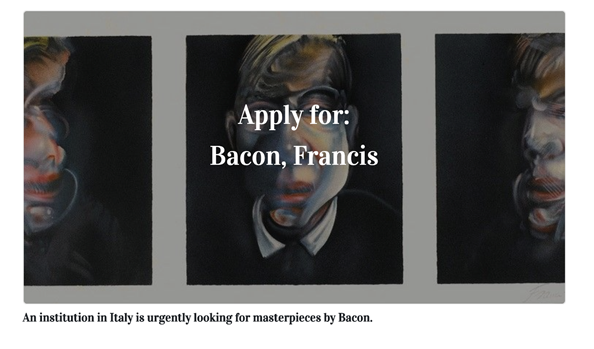
AD: What will be the impact of what you do?
BBW: I’ve always said that it’s important for the art market to have a player that in no way benefits from the value-add effect that exhibitions provide.
Currently, there are no entities that sit between the private and public sphere to connect them without a vested interest in the art market.
Vastari is building itself to be that intermediary.
AD: What is your dream project?
BBW: I’m working on it currently!
Vastari is something that combines the thrill of being within a trailblazing environment with the subjects I love which are art and culture.
AD: What role does the artist have in society?
BBW: Artists hold up a mirror to our existence.
The story of art through the ages in essence tells the story of what we value as humans.
AD: What do you dislike about the art world?
BBW: The fact that it can sometimes be quite money-driven, with a mask of caring about culture and people. I’ll give you an example:
At Frieze London, I visited on the Sunday with members of my family that aren’t into art. I tried to convince them that even if they didn’t understand the pieces, there were things in the exhibition that would come alive if you asked the gallerist to explain the artist’s vision.
To prove my point, I went up to a gallery with a certain readymade sculpture that, to be fair, was quite difficult to understand. I asked the representative to explain what he felt the importance was of the piece. Instead of telling us, he simply stated with a snooty face: “It’s open to commentary”.
What is the story in that? How can you argue that this is the meaning of art and culture? I felt like taking a copy of Gombrich’s volumes and smashing it over his head. If the art doesn’t make you feel anything, and it doesn’t inspire thoughts, and even the gallerist can’t explain it, no way!
Conversely, I dislike that money is a dirty word in the museum world. All cultural projects need funding, but when you mention the word “marketing” or “business model” it’s like you’re doing it for a profit. I really would like to stimulate museums to believe in a sustainable non-profit structure. Non-profit doesn’t mean no profit.
Luckily, both sides are changing - commercial galleries are valuing the wider audiences more and more, and museums are starting to be open to discussing business models.
On the panel with us are two of the collections that are a part of the Vastari network - the Kremer Collection and DSL. I can't wait to share what we're doing!
AD: What’s the best piece of advice you’ve been given?
BBW: You make your own luck.
AD: Which technologies do you use and combine and why?
BBW: Our entire platform is basically a cloud-based application, using many micro-services. Of the new technologies, we are experimenting with machine learning, blockchain and virtual reality - to assist in our networking, messaging, contracts and databases.
We will be discussion what we do with VR at the panel discussion at Unfold in Bahrain, where we can share some of the virtual reality content that is available for touring on the Vastari platform, as well as the proof of concept we are developing for insurance with 360 imaging.
AD: What is the role of people, of the crowd in your project?
BBW: I believe in the importance of the mass to the master. People can engage with exhibitions on a scale that they can’t with other methods of communication, and their interest will define what pieces are considered masterful in the future.

ArtDependence Magazine is an international magazine covering all spheres of contemporary art, as well as modern and classical art.
ArtDependence features the latest art news, highlighting interviews with today’s most influential artists, galleries, curators, collectors, fair directors and individuals at the axis of the arts.
The magazine also covers series of articles and reviews on critical art events, new publications and other foremost happenings in the art world.
If you would like to submit events or editorial content to ArtDependence Magazine, please feel free to reach the magazine via the contact page.